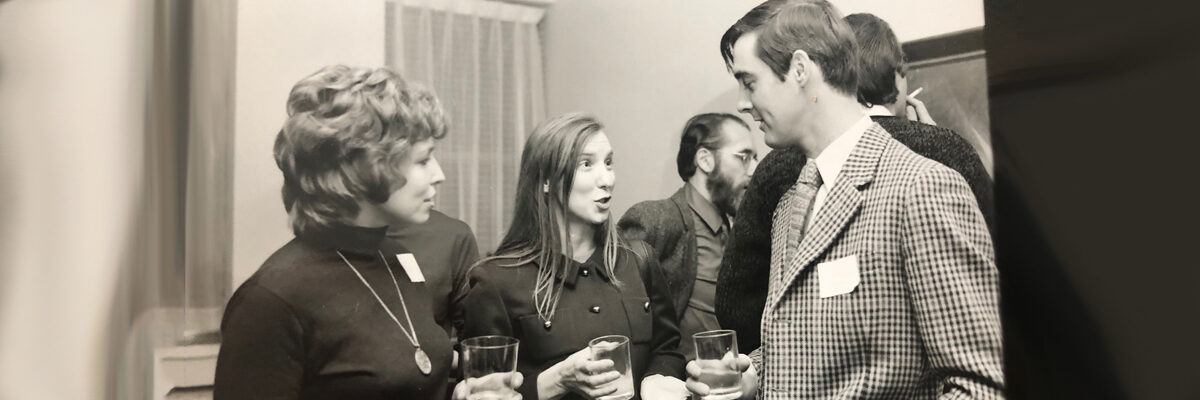
50th Anniversary of CAPC
Celebrating 50 years of Professional Accreditation in Canada
2021 marked the 50th anniversary of the institution of the CAPC - Canada's independent accrediting body for conservation professionals. Over the last 50 years, the CAPC has worked tirelessly to ensure that Canada's cultural heritage is preserved according to the highest standards, by facilitating and promoting professional accreditation in the field of conservation.
Founding member, Ian Hodkinson, reflects on the association's early days in the address below:
"In 2019 I was approached by the President of the Canadian Association of Professional Conservators and asked if I would consider writing down recollections of the deliberations surrounding the 1971 establishment of CAPC. As the sole survivor of the founding group, I recognize an obligation to set down my memories. Before beginning I have to say that the following recollections are based partly on the contents of existing files but also partly on memories of events and my perceptions of human interactions which took place fifty years ago and therefore are quite possibly coloured by subsequent understanding and the passage of time.
Before launching into the nitty gritty of the formation of CAPC a bit of background is required to explain how I became involved in the formation of CAPC after such a short time in Canada. It began shortly after my arrival in 1969. I came to Queen’s University after a ten-year career in art conservation with the National Trust for Scotland. I will spare the readers my reasons for leaving Scotland and coming to Canada but I believe they were worthy and ultimately reasonably successful. My initial responsibility at Queen’s was to establish an art studio and conservation laboratory in which I would teach student artists and art history students both historical art techniques and art conservation theory. In addition I was to provide conservation services to The Agnes Etherington Art Centre and be allowed to conduct a private art conservation practice.
To facilitate these aims after arriving at Queen’s I immediately contacted and visited existing conservation facilities in Ontario. At the Royal Ontario Museum I met paintings conservator Elizabeth Phillimore and Bernard Leech a scientist who was in charge of the ROM Conservation department and at the Art Gallery of Ontario in Toronto I met paintings restorer Eduard Zuwkoski. In Ottawa, I visited the National Gallery of Canada where I was warmly welcomed by Mervyn Ruggles its Chief Conservator. It was a very productive visit during which we toured the Restoration and Conservation Laboratory (RCL) and discussed aspects of the various conservation projects which were in progress as well as various conservation methods and materials. It was at that time that I became more aware of the activities of the National Conservation Research Laboratory (NCRL) which was housed next door to RCL though I did not at that time meet Nathan Stolow its scientist Director. It must have been evident that I had enough understanding of conservation theory and practice as not long thereafter, in early 1970, I was invited by Mervyn Ruggles to a meeting in Ottawa to “discuss the formation of an association of art conservators”. There was no Canadian Group of IIC (International Institute for Conservation) so at that time conservators in Canada joined the American Group. I assumed that the purpose of the proposed meeting would be to discuss the formation of a Canadian Group of IIC but such was not the case.
Participants at the meeting included conservators Roger Roche from the Public Archives of Canada, Richard Renshaw-Beauchamp from National Historic Sites, Elizabeth Phillimore from the Royal Ontario Museum and me from Queen’s University. Mervyn Ruggles was the initiating force abetted by Roger Roche. To my surprise the purpose of the meeting was to discuss the possibility of forming a professional organization with membership of “conservators who had received a requisite amount of training and had achieved a demonstrated level of understanding and expertise in the profession”. It was felt that while a Canadian Group of IIC would be a valuable and necessary development in the field as membership of IIC was open to anyone interested in fostering conservation it could not function as a true professional association.
The impetus for this approach was that there were individuals in Canada with no experience or understanding of conservation accepting private commissions and quite often ruining works of art. This struck several chords in me. Firstly, back in the U.K. I had always regretted that no such professional association existed. Secondly, one of my first jobs for the Agnes Etherington Art Centre at Queen’s was to examine a 17th century European painting in oil on canvas which had been sent to a ‘restorer’ in Ottawa for treatment and returned in worse condition than when it was dispatched with no explanation, no documentation and evasive answers to questions. Thirdly, I was in the process of designing a curriculum for a conservation education and training program which would ultimately manifest itself as the Master of Art Conservation Program at Queen’s. The concept of a professional association in Canada was entirely appealing.
It became clear that all participants at the meeting had the same concerns about the damage to historic and artistic works being caused by incompetent, self-styled restorers. Wide-ranging informal discussion ensued and there was agreement to begin the process of forming a professional association. All agreed to think about the possibilities and problems and bring ideas to future meetings. At that time personal computers, email messaging and the internet were years away and even tele-conferencing was in its infancy, cumbersome and expensive. In-person meetings were required so a decision was made to hold future meetings in Kingston which was somewhat close to being halfway between Ottawa and Toronto.
Over the course of the next two meetings many aspects of such an association were discussed. Samples of the constitutions and by-laws of other professional associations were obtained and studied, by-laws were written, categories of membership, requirements to qualify for membership, Boards of Examiners et cetera were proposed with the object of calling a general meeting of potential members in Ottawa. The question of bilingualism was discussed and the advice of Roger Roche, the only fully bilingual member of the group, was to proceed in English with Roger providing French translation as required. It was decided to hold a general meeting in Ottawa with invitees who, in the opinions of group members, would pass scrutiny by a Board of Examiners.
At the meeting, which was held in Ottawa at the Public Archives of Canada, after welcoming remarks by Roger Roche and a presentation by Mervyn Ruggles on Aims and Objectives attendees were asked for input and lively discussion ensued. A vote was taken to decide on the creation of the association and it being unanimous there was a call for nominations for Officers who were elected by ballot. The ballots resulted in the elections of Mervyn Ruggles as Chairman, Roger Roche as Vice Chairman, Elizabeth Phillimore as Secretary, Richard Renshaw-Beauchamp as Treasurer and Ian Hodkinson as Member-at large. That group was to be called The Executive Committee. Nathan Stolow was elected as Honourary Chairman a position seen as having a purely symbolic role.
As a result of the successful meeting an application for Letters Patent for The Canadian Association of Professional Art Conservators (CAPAC) was submitted to Consumer and Corporate Affairs on the fifth of February 1971 with the first Directors being officers elected at the General Meeting. The application was successful thus CAPAC came into being receiving its charter on February 12, 1971.
CAPAC? Not CAPC? At the initial meeting the name of the association was debated and a vote taken which led to the acceptance of the name Canadian Association of Professional Art Conservators (CAPAC). As might be expected there was some desire to include other specializations in the name, notably archaeology. Many options were considered including the catch-all phrase Historic and Artistic Works which is used by other conservation organizations but never included in their acronyms. Personally, I understand ‘art’ to have the broad definition of ‘manifestations of human activity involving imagination, creativity and technical skill’. In the end the need to change the name came from a surprising direction. In late 1972 a letter was received from lawyers representing the Composers, Authors and Publishers Association of Canada (CAPAC was an organization formed in 1925), demanding that our association cease using the CAPAC acronym 3. Another round of discussions finally led to simply eliminating ART from the name - ergo CAPC.
From the beginning there was concern about areas of specialization as there are many. It was clear that the initial idea was to include only practitioners of restoration and conservation but the argument that scientific research was integral to the development of conservation prevailed thus a Conservation Scientist category was included. Next followed the requirements for membership. As there were no defined professional qualifications such as those for engineers, architects or the medical profession it was clear that a Board of Examiners would be required. But who would examine the first members? It was a classic chicken-and-egg situation.
At the General Meeting I proposed that as the present group represented most of the principal conservators in Canada and that they had been elected an Executive Committee it seemed logical that that committee should constitute the first Board of Examiners. A counter proposal was made by Eduard Zukowski that all the present company be accepted as founder members at face value and it was seconded by Ursus Dix of the National Gallery of Canada. Since all those in attendance had been invited in the belief of the other members of the Executive Committee that they would pass an examination I withdrew my proposal and the Zukowsky proposal was unanimously adopted. Thus, all those present at that meeting were, in effect, grandfathered/mothered in as bona fide founding members.
The existence of the new Canadian association was presented to the North American conservation community at the Annual Meeting of the IIC-American Group at Oberlin College, Ohio in June of 1971 at a special meeting convened by the Canadian members. The meeting was lively with opposition presented by the scientific coterie led by Nathan Stolow and Bernard Leech who presented the position that what Canada needed was a Canadian Group of IIC. No one disagreed but the other Canadian conservators present were all for the need for both organizations with a possible future amalgamation of the two. A Canadian Group of IIC was later hastily formed with Bernard Leech as its President but due to lack of activity it fizzled out. Meanwhile in 1972 the new Canadian Museums Policy had led to the formation of two Federal Conservation enterprises namely the Canadian Conservation Institute and the Conservation Division of Historic Sites. It also led to federal funding to enable the establishment of the Master of Art Conservation Program at Queen’s. As a result of the latter Henry Hodges who was Treasurer of IIG in London was hired as Professor of Artifacts Conservation and Jim Hanlan, a senior chemist at NCRL was hired rounding out The Three Hs, Henry and Jim came to Kingston to collaborate in the design of the new MAC facility. In late 1973 a meeting was held with Henry Hodges as chairperson in the new premises of the Historic Sites Conservation Division which was now under the direction of Brian Arthur newly arrived in Canada from the U.K. and subsequently voted in as Vice-chairman of CAPC. At that meeting IIC-CG was resuscitated and has continued to prosper. Although amalgamation of CAPC and IIC – CG has not taken place the two organizations have collaborated successfully on several fronts including the formulation of the Code of Ethics for Conservation in Canada, the brochure on How to Find a Conservator in Canada and the procedure of holding joint Annual General Meetings."
--Ian Hodkinson, March 2021
Member Stories
To learn more about how accreditation has shaped the professional lives of our members and the impact our members have made in Canada and internationally, read the personal reflections below.
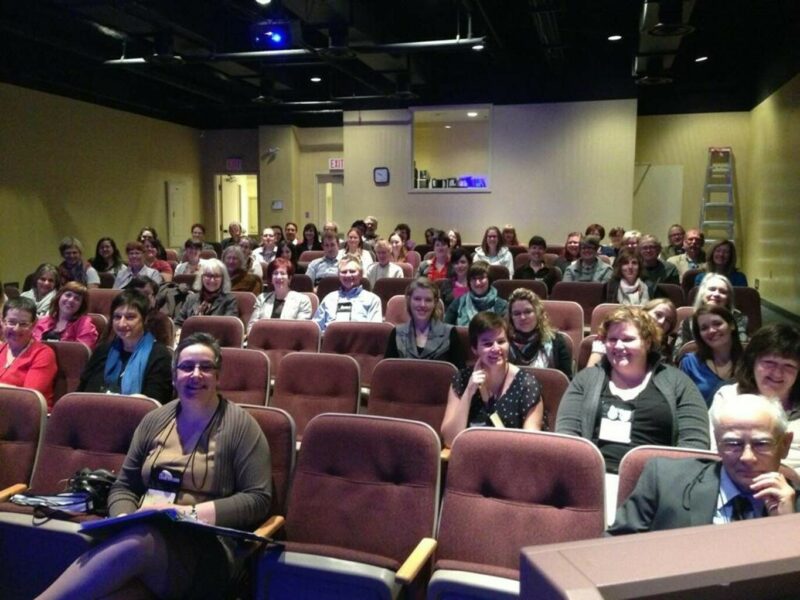
"I joined CAPC in 2007, when I was accredited as a Conservator specializing in Objects. Not too long after that I started volunteering on various projects, and became a member of the CAPC board, eventually serving a term as CAPC President (2012 and 2013). One of the reasons I had been nominated as President was that I had previously served as President of CAC, and one of the main initiatives both organizations were looking into at the time was a possible merger of the two organizations. The question was put to a vote at the 2013 AGM. This coincided with the 2013 CAC annual conference and workshops, held at the New Brunswick Museum in Saint John, of which I was the conference chair (it was a busy year!). Since a merger would have required dissolution of both the CAC and CAPC, it was not a change to be undertaken lightly, and so both organizations had decided a 2/3 majority would be required to pass the motion. There were good arguments to be made both for and against dissolution and merger. As President, I felt it was wise to remain neutral in the debate, so I did so, although personally I was leaning strongly toward a merger. Ours is a small profession and I had seen first-hand the burn out that comes from a small group of dedicated volunteers, many of whom were dividing their energy between the two organizations as well as the amount of money that was being spent by both organizations on the business of running the organizations (everything from auditors’ fees to postage), that I felt could be better economized and redirected toward advocacy, grants, and the support of emerging professionals. In the end, the CAC membership (of which most CAPC members are also members) reached the 2/3 majority in favour of dissolution and merger; and while a simple majority of the CAPC membership were also in favour, we failed to reach the required 2/3 majority that would have passed the motion. The results were very close and the motion did not pass within CAPC by a difference of only one or two votes. I have always wondered whether or not I did the right thing by maintaining public face of neutrality on the issue. Perhaps someday when the time is right, the question of a merger can be revisited. In the meanwhile, I will remain a proud member of both the CAC and CAPC and continue to be involved as a volunteer with both organizations.
While the results of the merger vote at the AGM were a disappointment to me and many others, the conference as a whole was a great success and a great deal of fun, friendship, and education came out of it. If there is one thing we East Coasters know how to do, it is to throw a party! Perhaps someday we will do it again!"
--Dee Stubbs-Lee
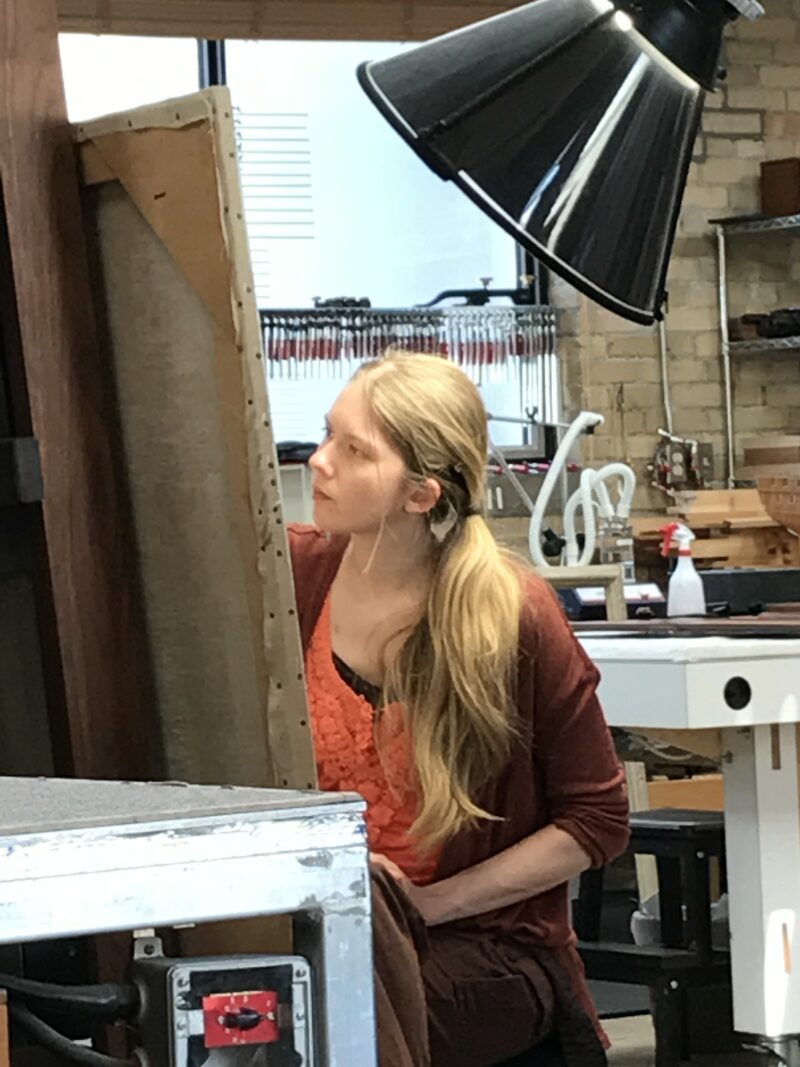
"In today’s world where anyone can declare themselves to be an “expert”, I value the accountability of an association that does its part to safeguard our country’s cultural heritage by requiring each of its potential members to be scrutinized by an established professional body of peers. I felt very proud when I passed my own review, and joined the ranks of CAPC in 2020, an association with a 50-year history of pursuing excellence in conservation. Having completed my academic training in 2015 and recognizing the different post-graduate training opportunities available to emerging conservators, whether that be in a museum, art gallery, conservation institution, or apprenticeship in an established private practice, having a standard gauge to qualify professional competence in all the key areas of development is necessary. Conservation is a diverse field with countless skills and specializations, but also high stakes, as the items in our care are most often one-of-a-kind and irreplaceable, holding high values not only monetarily, but also in being cherished by their owners. CAPC provides a valuable ideal: a nation-wide body of professional peers across the wide array of institutions, labs, and studios, to access high-level constructive criticism, openness and camaraderie, and reduce insular or isolationist tendencies that are easy to fall into in this line of work."
--Bethany Jo Mikelait
"Although I was employed as an institutional conservator, I
felt it important to close ranks and join fellow colleagues in CAPC
accreditation. In this way, I was able to contribute to building a
critical core of peer-accredited conservators in Canada. It was a
pleasure to contribute to the association over the years by serving in
various capacities on the Board of Directors and on Boards of
Examination. I was able to see the inner workings of the association,
and discover the skills and dedication of the volunteers who keep the
association vital, responsive and alive. I know that CAPC accreditation
is the best way forward, to both raise the standards of practice and to
improve the visibility and legitimacy of the conservation profession in
Canada."
--Michael O'Malley
"I applied for CAPC accreditation as a conservator who’s graduate training did not take place in Canada. Although I had many years of experience in the field, I felt that the accreditation solidified my training and enabled me to establish a greater level of trust with my Canadian clientele. I appreciate how the CAPC accreditation elevates the standard of your work as a professional."
--Majid Ghaziantafrishi
"I was accredited in 1989. Working in a large, science-based institution, and lacking a Master’s degree at the time, my institution’s perceived equivalence of CAPC accreditation to a Master’s degree made that valuable for credibility within the museum. Working in a field outside the mainstream of humanities, and not having received formal conservation training, accreditation was also valuable for my self image and reduction of my imposter syndrome. More important than those concerns was believing that I had a professional obligation to contribute to a system that could help non-expert users of conservation services. Allowing them to have confidence in the professional competence and commitment to standards and ethics of anyone they choose to rely on for conservation work. I did not fear (too much) failure to pass accreditation since should that happen, I would learn what my deficiencies were and how I could, if I so chose, work to correct them.
After more than thirty years in the organization I am confident that it is a group based on mutual respect for both members and applicants and serves a laudable role in Canadian society."
--Robert Waller
"During my early years in the field and before becoming a member in 1995, I received mixed feelings from several conservators about CAPC, and the effectiveness of its efforts. Some of my supervisors and mentors were dedicated supporters, while others had strong opinions otherwise, and still others were ambivalent. As we all do, I made up my own mind and decided to join forces with what I ultimately felt was a brave and benevolent membership trying to work toward widespread recognition of high standards of practice in our field: one as my principle teacher of paintings put it to a classroom of eager students back in 1987, “ripe with unqualified practitioners”. I hoped to contribute in an ongoing way throughout my career to an organization of peers who were making a difference, albeit slowly and not without many challenges, to bring order in a good way to an unregulated field.
I’ve always felt that Conservation is undergoing a long period of transition from trade to recognized profession. It continues to be difficult to convince even many of our most highly qualified peers to join the CAPC. As well, membership does not end with peer review, acceptance and the annual payment of dues, but each of us is required to take personal responsibility for maintaining what CAPC stands for. Ongoing membership requires dedication and a strong will to improve the practice of Conservation in Canada, and worldwide. We largely serve the works of art and objects of heritage we work so hard to preserve for future generations. As members of CAPC, we contribute in many ways to the organization, and some of them from time to time may compromise our own personal reputations or businesses. Occasionally we are placed in situations where we have to call into question and disappoint others in the field. It can be very difficult, but by working and supporting one another in groups, I have seen much progress.
I’m proud of my predecessors and the organization they began, and of what we have achieved so far.
A half century is not that long a time when we consider the obstacles we are working to overcome and the high standards we wish to uphold, and see more widely spread. Congratulations Canadian Association of Professional Conservators. Happy 50th Anniversary!"
--Jennifer E. Cheney
"I applied for CAPC accreditation as soon as I became eligible in 2015 (6 years after completing my graduate degree in conservation) because I saw it as a way to test whether I truly “had what it takes” to run my own paper conservation practice. Working independently and making all the decisions, I felt it necessary to find out where I fell on the scale of proficiency as a conservator in my field, and how I measured up to my peers. In addition, I wanted to be able to offer my clients a sense of assurance when it came to the unique and often priceless objects they left in my hands.
As a conservator who wasn’t trained in Canada, I very much appreciate the equitable nature of CAPC accreditation, which allows for varied forms of training and modes of experience building. It doesn’t matter where or how you were trained, just that you have the required competencies in your specialization. CAPC accreditation not only levels the playing field for a more diverse profession in Canada, but it elevates the profession by offering the Canadian public a higher standard of qualified practitioner."
--Stephanie Porto
"In the spring semester of my first year in the Queen’s conservation program (1985), Ian Hodkinson asked our class to write a paper on the topic of “The Licensing of Conservators in Canada”. While I doubt that many of us came to the conclusion that licensing was a feasible option in Canada, it certainly sparked an interest in the accreditation process offered by CAPC. I joined CAPC not too long after I qualified along with a number of others from that conservation class – so thank you to Ian for getting us to think about the benefits of becoming members!"
--Heather Dumka
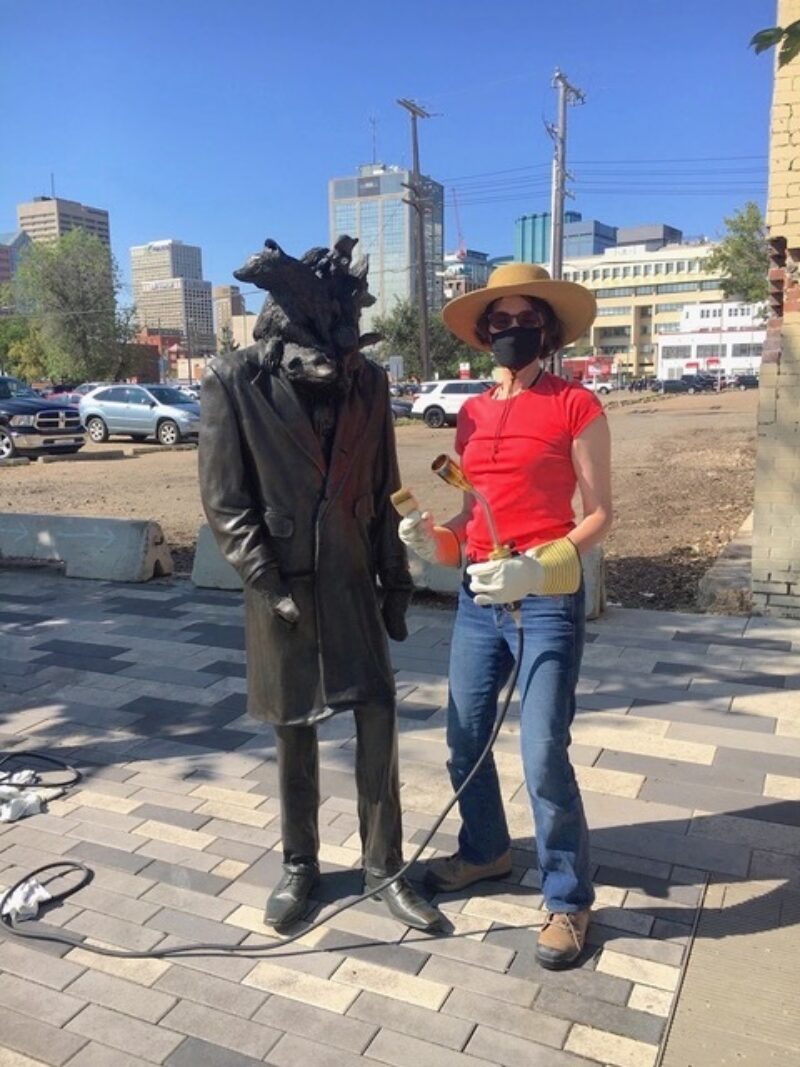
“Walk on the Wild Side.” I am shown here assisting with a maintenance treatment of a bronze sculpture titled “Wildlife” (2015) by Brandon Vickerd, City of Edmonton Public Art Collection - well out of a paintings conservator’s comfort zone.
"Conservators are always scanning the environment for a potential conservation application. What better way to learn than to step outside one’s usual work environment. In 2020 I took a sojourn as temporary public art conservator for the Edmonton Arts Council (EAC). It was a quick strategic maneouver designed to cushion while we all braced for the pandemic’s impact, both broadly and on the heritage sector. Ironically, I became less isolated than normal!
There is no substitute for the direct and indirect benefits of working alongside colleagues in order to expand, challenge and hone one’s knowledge base and problem-solving capabilities. This includes looking outside of our profession - for example, seeing how industrial service providers collaborate with artists in the production of public art. I appreciate how the requisite logging of CAPC professional development hours recognizes varied forms of learning.
Accredited in 2000, the preparation of a portfolio for CAPC membership application was a personal millennium project and nearly statutory! Aside from the obvious benefit of elevating the public’s awareness of the profession and trust by submitting to the accreditation procedure, I believe it unifies conservators in public and private sectors, both within the profession and in the public eye. It also signals a commitment to documentation as a keystone of our profession. While the internet and social media have finally raised the once elusive public awareness of conservation, there is the unhappy flip side of emboldening those with no training to try their hand after watching a misguided youtube video. More than ever, CAPC plays a critical role in promoting professionalism through all facets of heritage preservation."
--Cyndie Lack
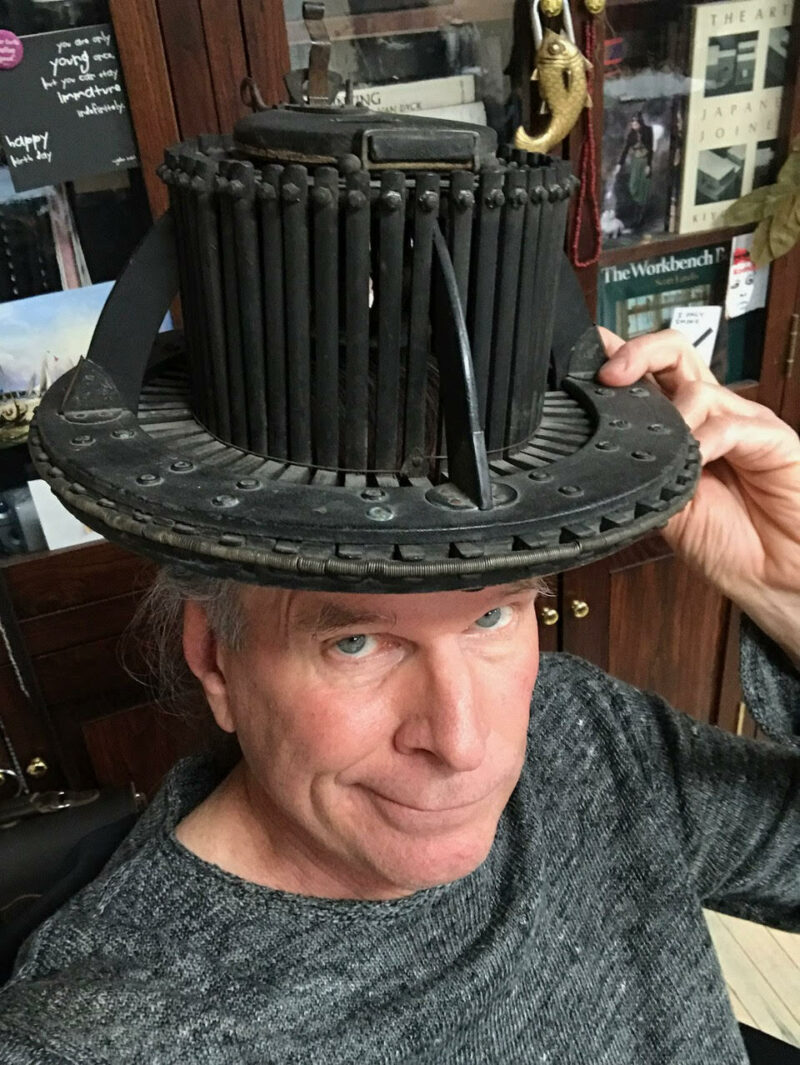
"I began in this field in 1974, the same year the first Queen’s MAC cohort graduated under the guidance of Ian Hodkinson, one of the founders of the CAPC. My path has been different than most in the past 47 years, not better, just different. Many of my achievements have been pursued in solitude, perhaps for no other reason than this kind of learning is in my nature. I learn more deeply by direct observation and problem solving activities. There has always been an interior need for me to be cognizant of being a part of something greater, through self recognition as well as recognition by others. I sought acknowledgment of my achievements in the court of my peers, and this process was fulfilled by being granted status in 1994 as a member of the CAPC, the oldest accrediting body for art conservators in the world. Recognition within this framework was sufficient to validate my accomplishments in the professional and public realms, and I maintain my relationship with the CAPC to this day to honour the field of art conservation, of which I am a part. I often hear from younger conservators that the CAPC has little to offer, that it gives very little beyond the commitment to paying more annual dues. Our association is very small in comparison to other international organizations which are funded by membership numbers orders of magnitude greater than ours. The CAPC has been and continues to be run by volunteers for 50 years, and has survived a merger attempt which may have subsumed its historical identity and autonomy. It has managed to retain its constitutional integrity, but what happens from here forward will be determined by those who will engage in evolving an association which expresses their vision for the future. The CAPC is a solid structure on which to build, and the rewards will be proportional to the effort, one that I feel is worthy of consideration."
--Laszlo Cser
Partnership
For nearly as long as the CAPC has been in existence it has been a close partner of the Canadian Association for Conservation of Cultural Property (CAC), working together to help serve conservation professionals and the public, and to advocate for the ethical preservation of Canada's cultural heritage.
Important joint projects include the Code of Ethics and Guidance for Practice, What is Conservation Brochure, Conservation Hiring Resource for Heritage Institutions, Canadian Collections Care Survey, Covid-19 Survey, and collaboration on social media in the annual #AskAConservator Day. Check out our Publications and News pages for more information on these and other joint projects.
